Articles
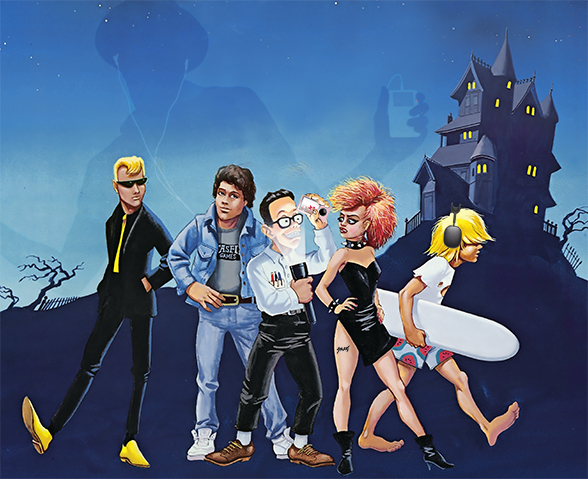
Maniac Mansion: The Liner Notes Interviews with the composers
In the hopes of getting quotes for the preceding annotations, I reached out to all of the NES version's composers for new Q&As. And well -- two out of four ain't bad by Mojo standards!
I figured the raw interviews would be of interest to fans, so here they are. George Sanger went above and beyond by giving me his answers in video form! Be sure to scroll to the bottom for a curated list of links to other relevant materials.
Tell me a little bit about how you came to be involved with a Nintendo port of Maniac Mansion, which was the first Nintendo cartridge produced by Lucasfilm Games. What was your relationship with the original game, or with the studio, prior to that?
All my game involvement was directly through George Sanger (The Fatman) who lived a few blocks from me. We had many phone conversations before we worked together about studio sessions for local musicians I was working with so I had gotten to know George a year or so before starting work on games together. I showed him some of my music and he started sending small projects my way. I think Nintendo versions of Maniac Mansion and Total Recall (the Arnold movie) were my first two projects with George. George had a previous relationship with Lucasfilm games and Dave Warhol in projects like Lucasfilm “Loom” Warhol hired George on projects he was in charge of the audio or composer on.
What was your musical background before this project? How about your background in composing for games?
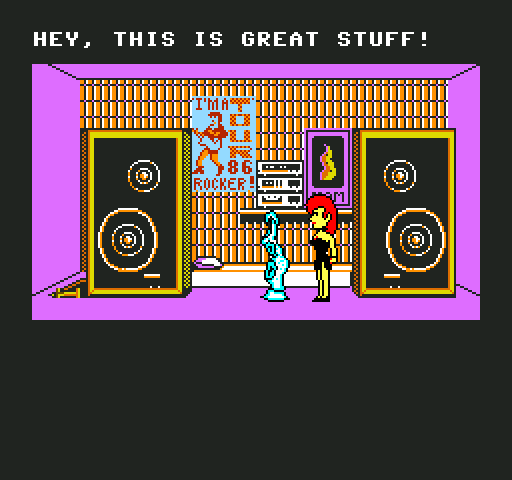
It started with many years playing percussion(mostly Timpani) in band and orchestra including college, church and professional gigs. I also spent many hours wearing out my John Williams Star Wars and other sound tracks out and just meshing the music in my brain for many years. I took some music theory in high school and did two years in the U.T. School of Music and played in the symphonic and epic Longhorn Band. This longhorn band was a bit influence on some of my styles including the Wing Commander theme. It’s 350 bad ass musicians going full tilt on the field and it’s quite the sound. Also, in the years leading up to working with George, I had dropped out of college and began learning recording and MIDI music production. I worked to emulate orchestras with the feeble primitive but growing technology and producing local upcoming (and rather broke) musicians.
The original PC version of Maniac Mansion contains little music beyond the theme song by Chris Grigg and David Lawrence. It isn’t common for NES games to be that quiet, so I’m curious if giving the console release wall-to-wall music was a mandate, or if this was an elaboration you guys came up with yourselves?
I’m not sure as I wasn’t in on the concept or decisions. I just followed orders and wrote a few tunes and got paid. George of course will offer better insight into that part of the process.
Once a tune is composed, how exactly does one go about implementing music into a Nintendo game circa 1990? What kind of tools were used? I have to imagine that a game composer in those days, when everything was “closer to the metal,” almost had to be a programmer of sorts themselves. Can you walk me through the process?
Ironically, it was less close to the metal for us in those days. We just provided a MIDI file with certain specifications and a programmer would implement it. (Probably Dave Warhol in this project) So, we just used a Roland MT-32 and later Sound Canvas as a rough pallet to work with as a standard and composed just like today with a sequencer and MIDI connection. Now, these early Nintendo games had a very simple specification. We called it three monophonic musicians and a “one armed drummer” We had three notes of melodic instrumentations and a drum set played by a drummer with no legs and one arm. (one note of polyophony for the drum set) Total of 4 note polyphony. Then the programmer who implemented the midi files into the game would take it from there. Later with PC games, we gained more control of the FM synth sound set with the ability to design our own sounds and implement some of the audio with the “Miles Audio” system. Of course today, everything is theatrical multi channel audio with tools for the composer to implement the audio, much closer to the metal so to speak than in days past actually. You can now even get into basic audio programming in the Unity Engine if your are hard core.
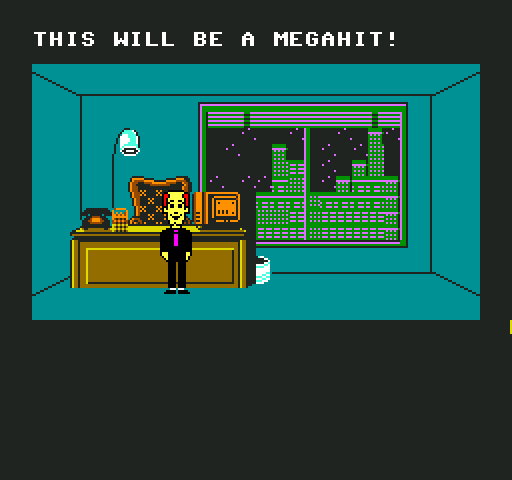
I like the conceit of the character themes being diegetic, with each of the kids possessing a portable CD player (quite the luxury at the time!) as their default inventory item, loaded up with a song that fits their personality. Whose idea was this?
That’s another question that is above my pay grade but George and Dave Warhol will give you some good answers on that I’m sure.
Yourself, George Sanger, Dave Hayes, and David Warhol of Realtime Associates are the credited composers of the dozen tracks that are acknowledged in the end credits. How did this collaboration come about, and how did you distribute the workload amongst yourselves?
George and Warhol worked all that out. I was handed a few tunes that George probably though were up my alley and that was it from my end. I think I jumped on the Compu-Nerd/Bernard’s theme though. I already had that song composed as a demo and it needed a good home and that’s where it came from. Just had to get it into the Nintendo spec format.
Those end credits attribute you to the themes for Bernard (“Comp-U-Nerd” -- putatively credited to Rocket Scientists), Wendy (“Sonatina in G Opus 47 BVW 801”), and Mark Eteer (“Go See Mark”), the televised marketing executive character. Could you talk a little bit about each of those tracks and any influences that might have been at play?
I already had the Comp-U-Nerd one done previously as a demo song as I was learning my way around synthesis and MIDI technology and simply conformed it to the now famous song. It was a perfect home for the song as it turns out. It was inspired by 80s and 90s film sound track near the time, most likely “Mannequin” (Andrew McCarthy film)
I think Wendy’s (classical) theme was inspired by “Britannia” and a classic violin sonata I was learning on Marimba in my college percussion recital days and other stereotypical classical piano/quartet styles.
I think the Mark theme may also be known as the TV ad. If that is correct, then this one was inspired through George Sanger, from the old “Cal Worthington” style Car Dealership local commercials with a country music theme.
How long did your involvement with the project last?
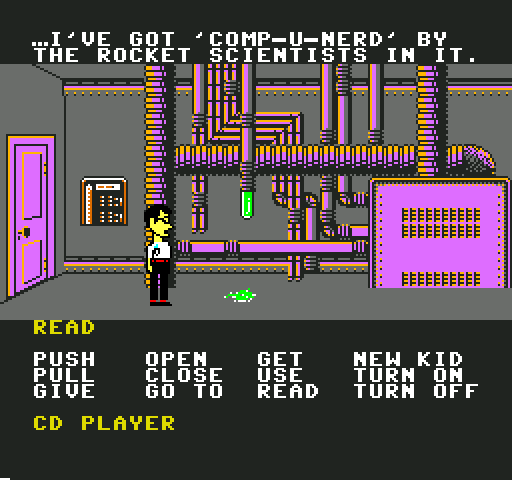
Probably not very long. My part may have easily been completed (especially with one song done to start with) in a week or two. If longer, it would just be other delays beyond my control.
Any particular memories from this project that stand out for you?
It was just cool to be working on something tangentially related to George Lucas. Big time bragging rights and surreal. It was also nice to make a little money on music. I was quite broke at the time if I recall.
Do you retain any artifacts from the project, like sheet music?
No, it was just digital information. It would be “Dr. T’s Atari ST sequencer software” that created the MIDI files saved at one time on floppy disk. Probably sent via slow 300 baud rate modem to George. Ask George about that as the University of Texas created an archive of allot of such memorabilia from Team Fat so if anything exists, that’s where it would be. It’s in the LBJ library here in Austin and some of our old gear is on display at the Bob Bullock Museum in the game history section. Nothing makes you feel old like seeing your stuff in a damn museum. LOL!
How do you see the legacy of this game in the context of your body of work? Is it something you get asked about with any frequency?
Yes, its strange. It was a small project at the time and some paying work for a broke and aspiring composer like me and I moved on to the next project and didn’t think much of it after that. (Though it was cool that it was Lucas Arts and all) For such a small blip in my work, it has been one of the most beloved and talked about over the years.
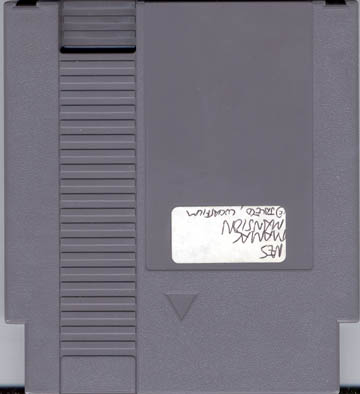
Links you might enjoy:
- VGArc Interview with David Warhol - A recorded interview with Warhol that is highly recommended for fans of 8-bit game audio. They really get into the weeds on the tech stuff. Transcript also included.
- C64.COM interview with David Warhol - A more recent, text-based interview.
- Texas Maestro Scores Big by Composing Video Game Melodies : Music: George Sanger has written background tunes for blockbusters such as Loom and Wing Commander. - A nice profile of Sanger by the Los Angeles Times in 1993.
- Interview with George Sanger from 1996 - Vintage interview on Youtube.
- Matt Chat 143: Introducing The Fat Man (George Sanger) - A five-part interview with George Sanger circa 2012, on Youtube. (Part 2, Part 3, Part 4, Part 5) "The Fat Man" George Sanger Answers Your Questions About Music and Games - Slashdot, circa 2014.
- An Interview with Dave Govett - Dated May 2002.
- The Music of Maniac Mansion (NES) - Pure indolence led the article you're reading to
rotpercolate for eighteen months before we got around to publishing it (have a look at the upload date on George Sanger's YouTube responses), and I must acknowledge the appearance of this similar article in the interim by the folks at VGFamily. Fortunately, the fact that their individual track writeups showcase some actual musical knowledge helps to distinguish it from our effort, so few toes have really been stepped on in the end. - My Gaming Audio History: Maniac Mansion (1990) - A blog post that does a deep dive into the Maniac Mansion NES soundtrack, including a quote from George Sanger.
- The Expurgation of Maniac Mansion - Douglas Crockford's famous article about Nintendo's draconian and nebulous censorship standards as they impacted Maniac Mansion.
- Douglas Crockford Interview - An old interview with Crockford about the Maniac Mansion NES conversion, which he managed. Hosted right here on Mojo.
- Maniac Mansion comparison - A blog post that fairly exhaustively compares and contrasts the various versions of the game.
- Sonic Outlaws (1995) - This "fragmented, gleefully anarchic documentary" centers around a bizarre infringement case that a Bay Area band found itself embroiled in. Because it's a small world after all, Chris Grigg makes an appearance -- you can see him on the right side of the frame here.
- The Maniac Mansion NES prototype - This is a ROM of a pre-release version of the NES game, nearly indistinguishable from the final build except for the presence of objects and text that were censored before publication. The only known copy of this cartridge in existence fell into the hands of game collector DreamTR from, it is ascertained, a source at Jaleco. In his possession it is believed to remain, but somewhere around 2005 he was prevailed upon by an online community that specializes in the custodianship of lost/unreleased games to let them dump the ROM. Since then it's been readily available online. To play it yourself, you need only download the ROM at the link and run it through an NES emulator (not ScummVM, which must decline to support it for legal reasons), like this JavaScript-based one that lets you simply drag the file into the browser. Note that the prototype contains some, but not all of the material that had to be altered or removed at Nintendo's behest, presumably because the modifications were made incrementally across a number of release candidates. Some of the more obvious "problem areas" were probably addressed before the game was ever submitted to Nintendo, which then managed to find more things to object to. An example of something you won't see in the prototype is the arcade game "Kill Thrill," which was already changed to "Tuna Diver" by then, though it appears in its pre-white-washed-form in a contemporary magazine preview.

